Abstract
A temperature-sensitive mutant of hamster BHK 21/13 cells, tsAF8, which at 39 degrees becomes arrested in the G1 (G0) phase of the cell cycle, is phenotypically altered with respect to temperature sensitivity after transformation with polyoma virus. Polyoma transformation does not produce reversion to a non-temperature-sensitive phenotype but causes increased entry into S and increased rate of cell death at the nonpermissive temperature, compared to untransformed tsAF8 cells. The increased frequency of cells synthesizing DNA is not accompanied by an increased frequency of mitosis, since most of the polyoma-transformed tsAF8 cells that synthesize DNA at the nonpermissive temperature do not divide. At the permissive temperature, polyoma-transformed tsAF8 cells, unlike tsAF8, also lose viability when exposed to other methods of arresting cells in G1. The most likely explanation for this phenomenon is that polyoma virus transformation interferes with the cellular response to this mutation as well as to other conditions that cause cell cycle arrest in G1.
Full text
PDF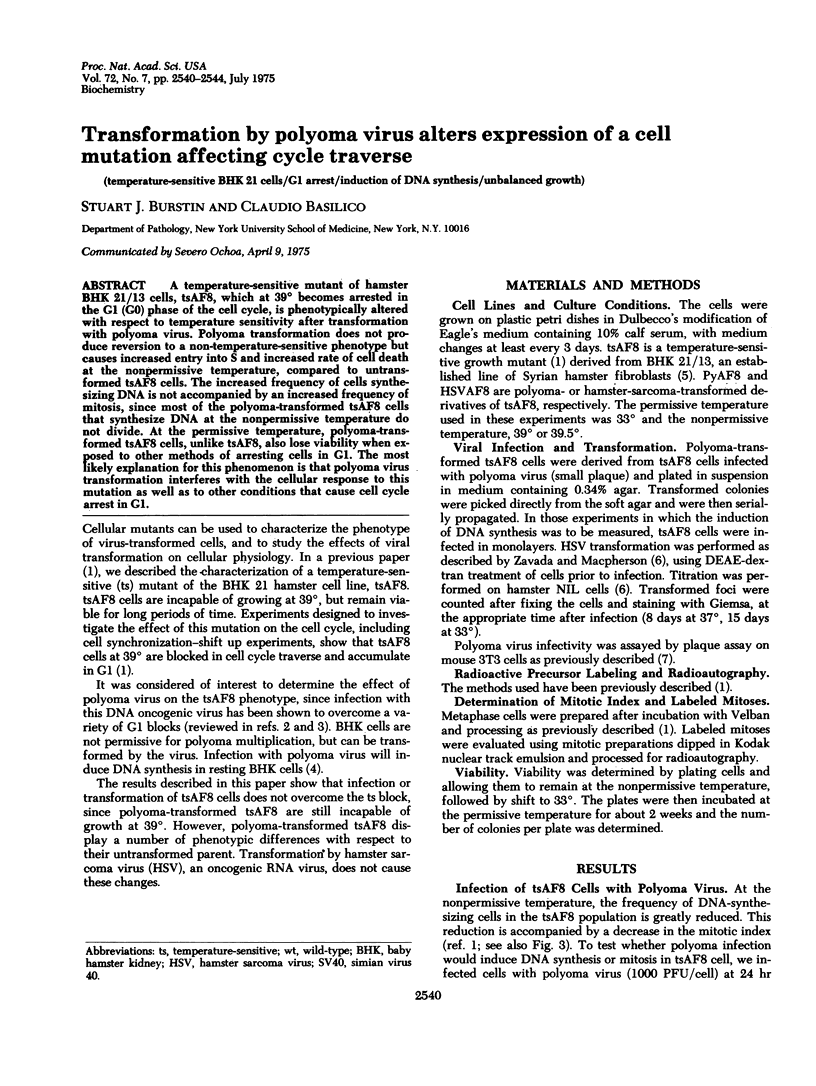
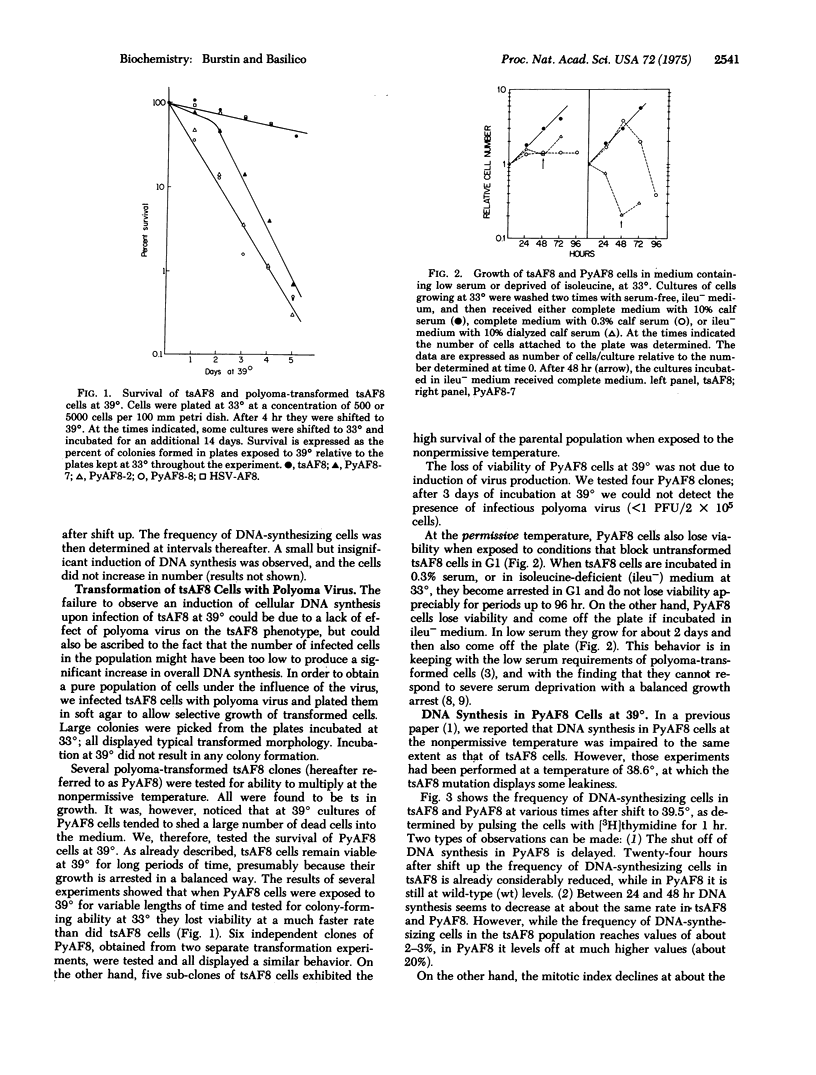
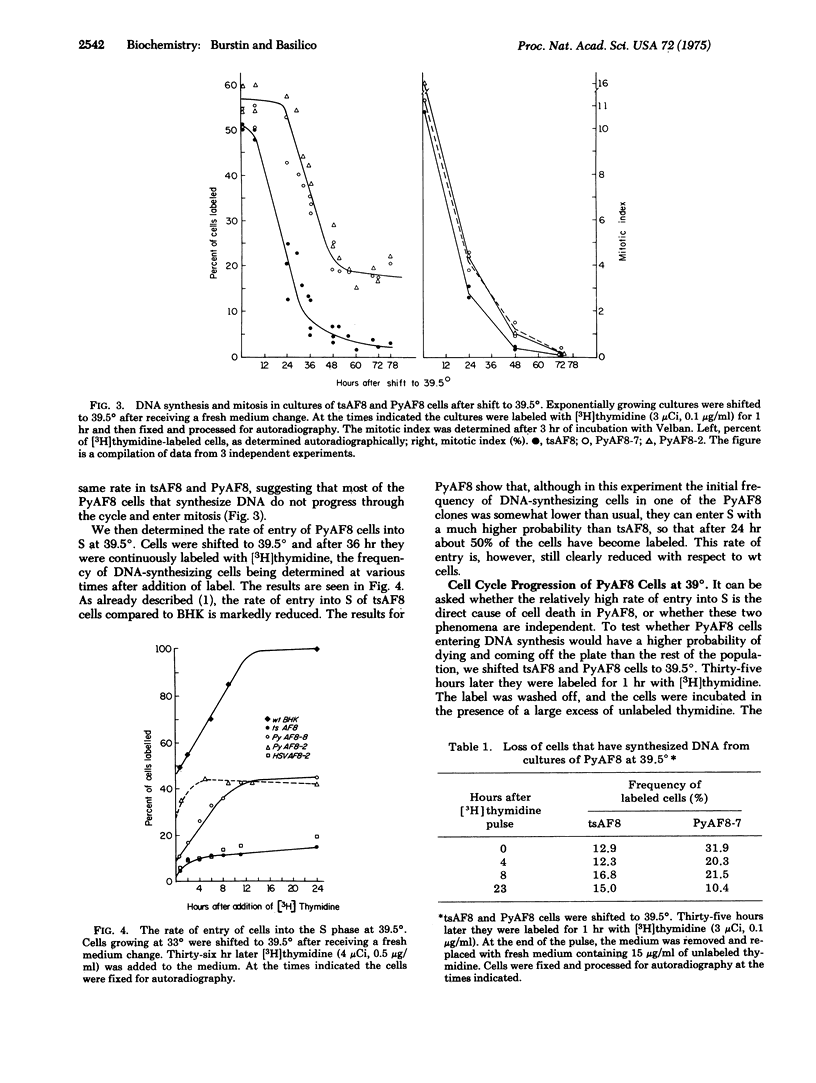
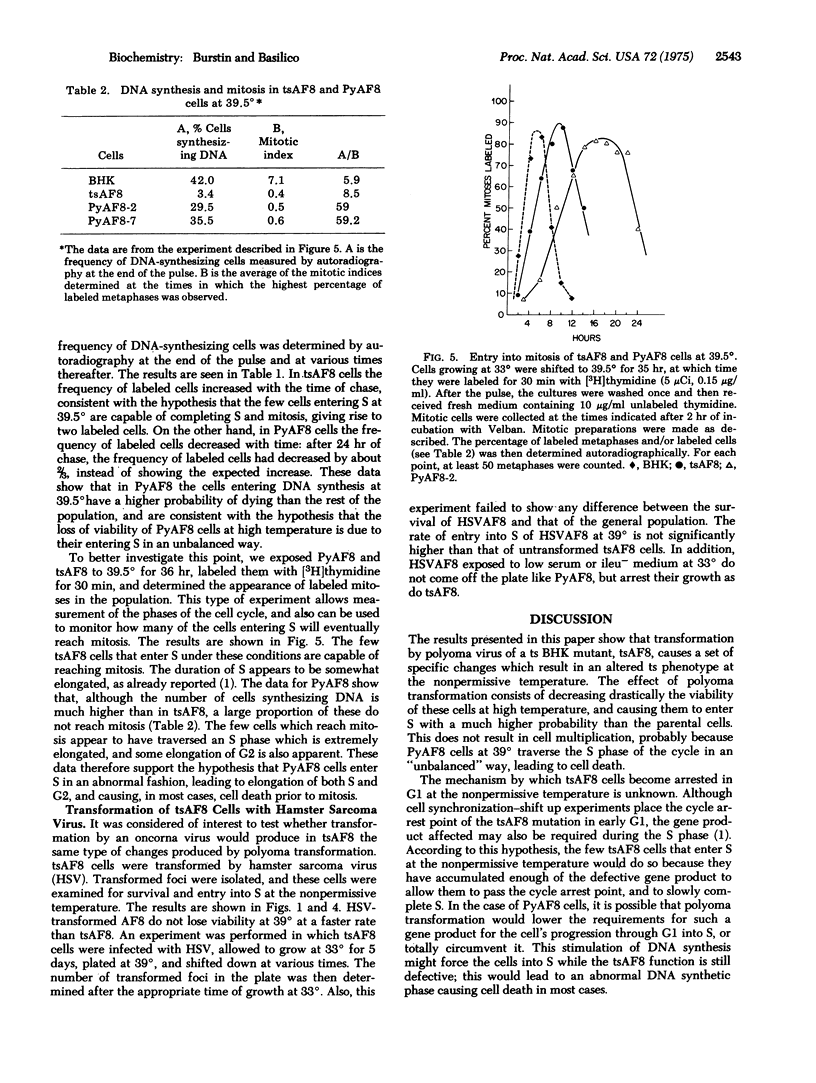
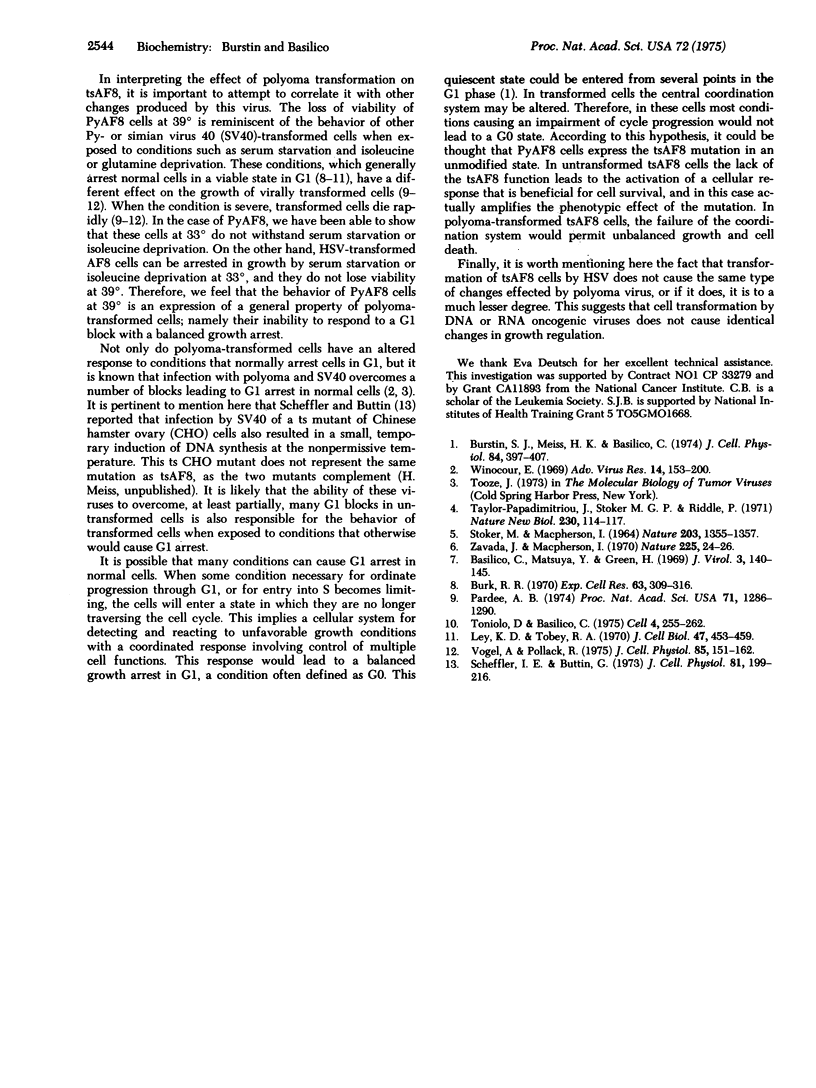
Selected References
These references are in PubMed. This may not be the complete list of references from this article.
- Basilico C., Matsuya Y., Green H. Origin of the thymidine kinase induced by polyoma virus in productively infected cells. J Virol. 1969 Feb;3(2):140–145. doi: 10.1128/jvi.3.2.140-145.1969. [DOI] [PMC free article] [PubMed] [Google Scholar]
- Burstin S. J., Meiss H. K., Basilico C. A temperature-sensitive cell cycle mutant of the BHK cell line. J Cell Physiol. 1974 Dec;84(3):397–408. doi: 10.1002/jcp.1040840308. [DOI] [PubMed] [Google Scholar]
- Bürk R. R. One-step growth cycle for BHK21-13 hamster fibroblasts. Exp Cell Res. 1970 Dec;63(2):309–316. doi: 10.1016/0014-4827(70)90218-1. [DOI] [PubMed] [Google Scholar]
- Pardee A. B. A restriction point for control of normal animal cell proliferation. Proc Natl Acad Sci U S A. 1974 Apr;71(4):1286–1290. doi: 10.1073/pnas.71.4.1286. [DOI] [PMC free article] [PubMed] [Google Scholar]
- STOKER M., MACPHERSON I. SYRIAN HAMSTER FIBROBLAST CELL LINE BHK21 AND ITS DERIVATIVES. Nature. 1964 Sep 26;203:1355–1357. doi: 10.1038/2031355a0. [DOI] [PubMed] [Google Scholar]
- Scheffler I. E., Buttin G. Conditionally lethal mutations in Chinese hamster cells. I. Isolation of a temperature-sensitive line and its investigation by cell cycle studies. J Cell Physiol. 1973 Apr;81(2):199–216. doi: 10.1002/jcp.1040810208. [DOI] [PubMed] [Google Scholar]
- Taylor-Papadimitriou J., Stoker M. Effect of interferon on some aspects of transformation by polyoma virus. Nat New Biol. 1971 Mar 24;230(12):114–117. doi: 10.1038/newbio230114a0. [DOI] [PubMed] [Google Scholar]
- Toniolo D., Basilico C. SV40-transformed cells with temperature-dependent serum requirements. Cell. 1975 Mar;4(3):255–262. doi: 10.1016/0092-8674(75)90173-7. [DOI] [PubMed] [Google Scholar]
- Vogel A., Pollack R. Isolation and characterization of revertant cell lines. VII. DNA synthesis and mitotic rate of serum-sensitive revertants in non-permissive growth conditions. J Cell Physiol. 1975 Feb;85(1):151–162. doi: 10.1002/jcp.1040850116. [DOI] [PubMed] [Google Scholar]
- Winocour E. Some aspects of the interaction between polyoma virus and cell DNA. Adv Virus Res. 1969;14:153–200. doi: 10.1016/s0065-3527(08)60559-x. [DOI] [PubMed] [Google Scholar]
- Zavada J., Macpherson I. Transformation of hamster cell lines in vitro by a hamster sarcoma virus. Nature. 1970 Jan 3;225(5227):24–26. doi: 10.1038/225024a0. [DOI] [PubMed] [Google Scholar]


